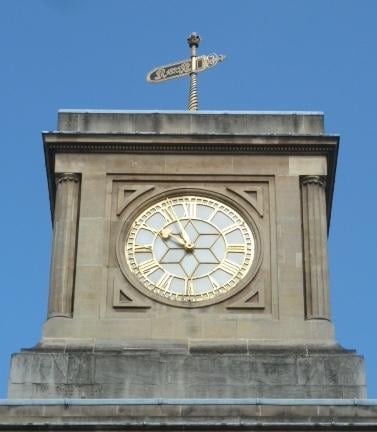Benjamin Lewis Vulliamy (1780-1854)
Turret clock 1826
RCIN 52179
Royal Mews, The Royal Mews, Buckingham Palace
-
A turret clock. Two replacement dials - one facing Buckingham Palace Road, the second to the Mews Quadrangle - of gilded and painted cast iron with the 12 hours represented by Roman numerals and spade and pointer hands. The eight day striking mechanism has two quarter chiming racks on two bells with weight movements and dead beat escapment.
In an article 'Some Considerations on Public Clocks' dated 1828, Benjamin Lewis Vulliamy describes the advantages of the original stone dial as having less heat conductivity as copper and 'the centre can be sunk and the hour hand made to traverse the sinking : this enables the minute-hand to lie close to the figures, and then almost all error from the effect of the parallax is avoided ... the figures are cut in stone and sunk about an eighth of an inch, after the manner of Egyptian monuments, from which I derived the idea.'
Vulliamy number 900. Described in the Clock Book as 'A Quarter Turret Clock for the New Mews Pimlico'. Office Bill dated March 1826 for £247 12s. 6d. including £83 19s 2d to the Mears foundry at Whitechapel for the bells.Provenance
The inclusion of a turret clock above the entrance arch to the Royal Mews was suggested by the Master of the Horse, the Duke of Dorset.
-
Creator(s)
(clockmaker)(bellfounder)(bellfounder)(nationality) -
Object type(s)








